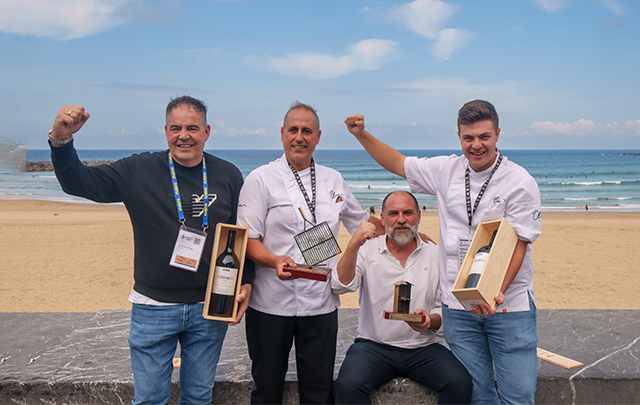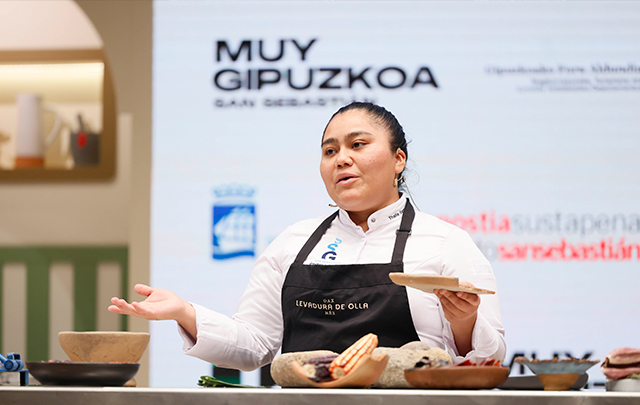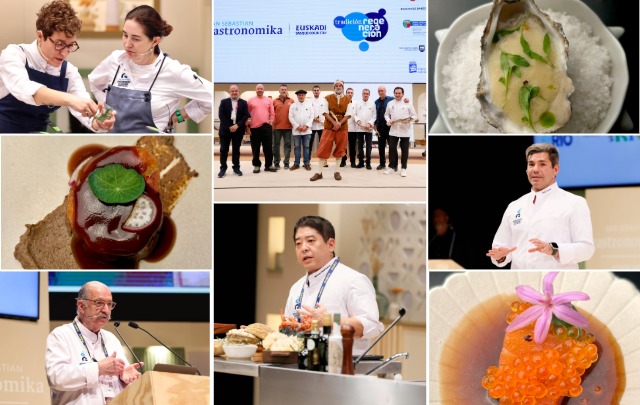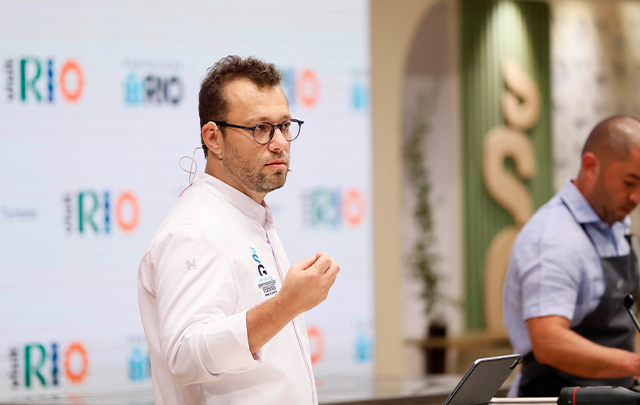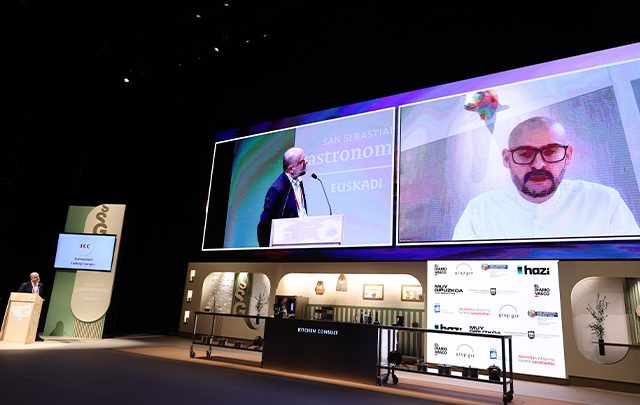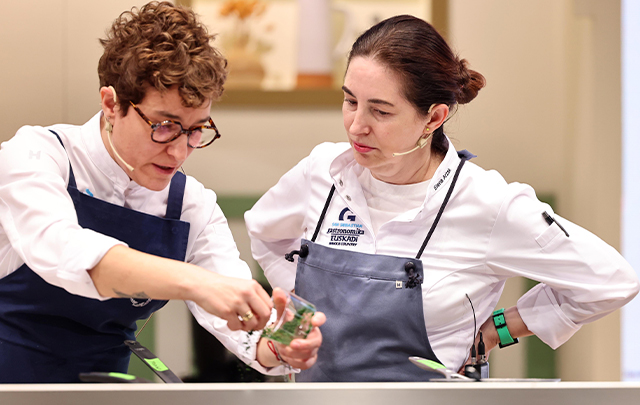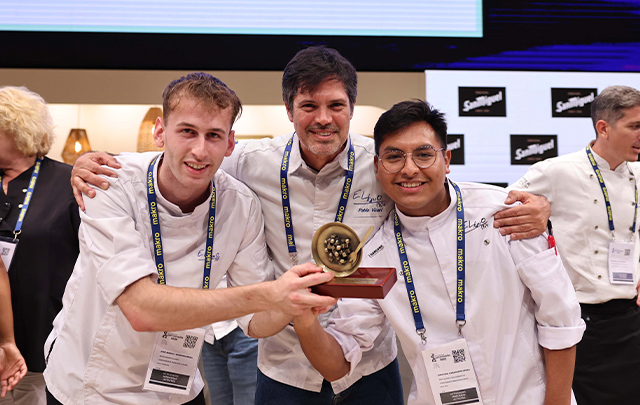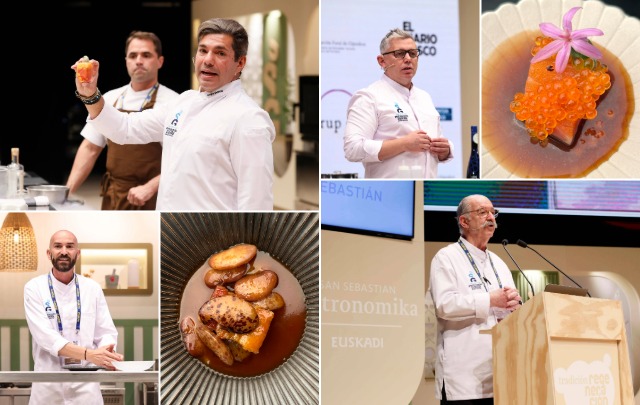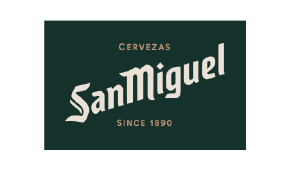News
Japanese charcoal dishes inspired by Basque cuisine
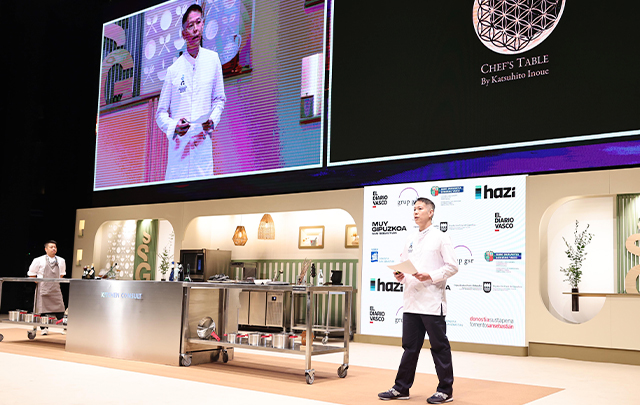
At Gastronomika, Katsuhito Inoue showcased his approach to slow cooking and the 72 seasons, reinterpreting curd, pilpil and steak with peppers
The chef, who runs the restaurant Chef's Table by Katsuhito Inoue* in Kyoto, Japan, began his presentation by stating that his time in the Basque Country with Andoni Aduriz had a significant impact on him. He said that Aduriz had taught him to value his gastronomic culture more, to research its techniques more, and above all to pass on his knowledge. As a special tribute, he drew on some Basque classics to demonstrate the essence of his cuisine, which is characterised by the gentle heat of charcoal and the tradition of the seasons.
For Inoue, charcoal, or bincho-tan, is much more than a simple source of heat: 'It is the interpreter of each ingredient, bringing out the best in its qualities in terms of flavour, aroma and texture. Above all, it has a spiritual focus, conveying tranquility and harmony,' he argued. Deeply rooted in Japanese culture, charcoal plays a fundamental role in the home, at the centre of the room where the family gathers. The chef also seeks harmony by observing and respecting the transitions between the 72 solar terms that divide the seasons in Japan. "We appreciate this when a certain flower blooms, the colour of a fruit changes or certain insects are born," he noted.
Capturing memories on a plate
To illustrate this, he described four of his creations in detail. The first, based on traditional Spanish curd, is a milk tofu with charcoal, made by adding rennet to soy milk and introducing a piece of bincho charcoal made from oak at a temperature of 100º. He then mixed this with dashi vinegar made from sake, rice vinegar, kombu (a type of seaweed), dried tuna and cane sugar. He serves this dish in a bamboo bowl, 'a plant whose shoots appear in mid-May'. The second dish is a grilled fish called Ayu, which is a freshwater fish with a very fresh aroma that is available at the beginning of summer. After coating it in a tempura batter containing charcoal powder, he grilled it slowly to preserve its umami flavour. "This type of fish goes very well with acid," he said, before describing a vinegar-based sauce made with a slightly spicy, slightly bitter plant and other aromatic vegetables such as onion, celery and carrot. This dish embodies the Japanese concept of ma, or emptiness, which involves not overfilling the plate “to highlight the beauty of the ingredients and spark the diner's imagination”.
Building on this technique, he told the story of what could not be seen on the plate with a miso-roasted aubergine dish. Here, the aubergine only appeared in the form of the charred skin powdered and mixed with bincho charcoal, miso and olive oil to create a broth. He was inspired to create this dish by Basque pilpil and used the less desirable parts of the fish to make it. He finished his presentation with a live plating of a Wagyu steak cooked in the style of Basque chueta a la brasa. In this case, the meat was marinated in koji and a potent sake and grape sauce. He topped the steak with sweet roasted peppers, saying that this conveyed the memory of his experience in Spain.



